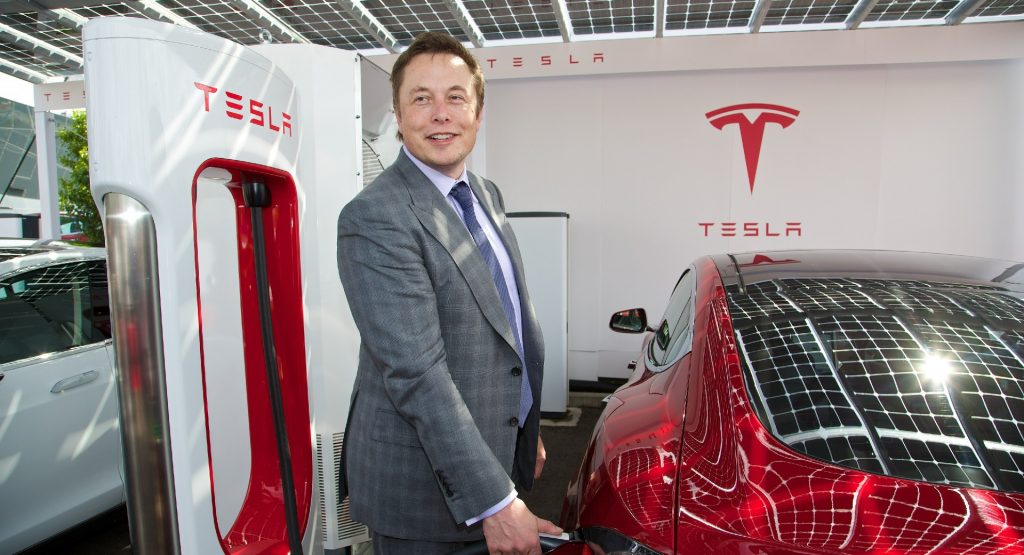When Elon Musk typed out his Tweet about taking Tesla private at $420 and said that funding was secured in 2018 there’s no way he could’ve possibly thought that we’d still be talking about it in 2022. Nevertheless, that’s the case as we’ve just had the chance to review a private text message exchange between the EV automaker’s CEO and the head of the Saudi government’s financial institution that Musk says was at the heart of his plan. And these texts that were released as part of a lawsuit are some of the boldest things we’ve seen Musk say in private.
The Public Investment Fund (PIF) is the sovereign wealth fund of Saudi Arabia and its governor is Yasir Al-Rumayyan. The newly disclosed text conversation between him and Musk is at the heart of this new story that sheds light on the dealings of two of the most powerful people on Earth.
In the court documents, we find not only the reasoning behind why Musk sent that tweet but also how angry he was just days later when things started to fall apart. According to the document, Musk believed that PIF had agreed to fund taking Tesla private and when news broke that the Fund had already purchased a $2 billion stake in the company, Musk wanted to ensure that all investors had the same information.
Related: Judge Rules Elon Musk Made False And Misleading Statements In Infamous $420 Funding Tweet
That’s why he sent the tweet just 30 minutes after the initial leak was published. Three days later Musk reached out to Al-Rummayyan after multiple news outlets began to question how much interest PIF actually had in funding the deal.
He said, “This is a major problem It is extremely important that you confirm that you are in discussions with me regarding the take private transaction. Nothing more needs to be said. If this is not said, we will never speak again. Never.”
Yasir replied with a long formalistic statement about general interest but then followed up with ” Please note that any SAUDI venture will be 100% owned by Tesla And no strains attached.”
Then two days later after not much had changed in the media, Musk followed up by sending a Reuters article claiming that PIF would not fund the move. In those early morning hours of August 12th, Musk said, “What the hell is going on here? This is false.”
Al-Rumayyan replied the next morning to Musk saying “Good morning Elon, Just wanted to check-in and see when your team would be able to start sending us information and perhaps have a kickoff call with our International Investments Team.”
“Please refute this false statement that PIF has no interest in Tesla. This is outrageous… I am deeply offended” For his part, Al-Rumayyan evidently made it clear to Bloomberg that the two were in talks but the wording wasn’t strong enough for Musk.
Musk laid all the cards on the table saying “This is an extremely weak statement and does not reflect the conversation we had at Tesla. You said you were definitely interested in taking Tesla private and had wanted to do so since 2016. You also made it clear that you were the decision-maker, moreover backed strongly by the Crown Prince, who regards this as strategically important at a national level.”
Later the same day he kept piling on the pressure… “when we met at Tesla recently, you said that you were the decision-maker for PIF, that you had wanted to do the Tesla take-private deal for two years, and that this was supported directly by the Crown Prince. I checked with my team who were in that meeting in case I remembered something wrong and they confirmed this exactly.”
Mr. Musk went on, “I will not work with an organization who’s [sic] public statement to the media do not match their private statements to me and my team. The Bloomberg article “makes me sound like a liar. It is filled with equivocation and in no way indicates the strong interest you conveyed in person” The two stopped communicating soon after and no deal ever happened.
It’s one thing to make a handshake deal on something personal and individual like a car or a truck. Even then, it’s considered potentially bad business as both sides open themselves up to liability. It seems wild that such a chain of events like the ones described above could take place in our day and yet now we have the proof that even billionaires leave themselves vulnerable from time to time.
Interesting. Just two questions, if I may.
How much of Twitter does the Kingdom own, directly & indirectly?
What are the Kingdom’s views on journalistic freedom of speech?
— Elon Musk (@elonmusk) April 14, 2022





